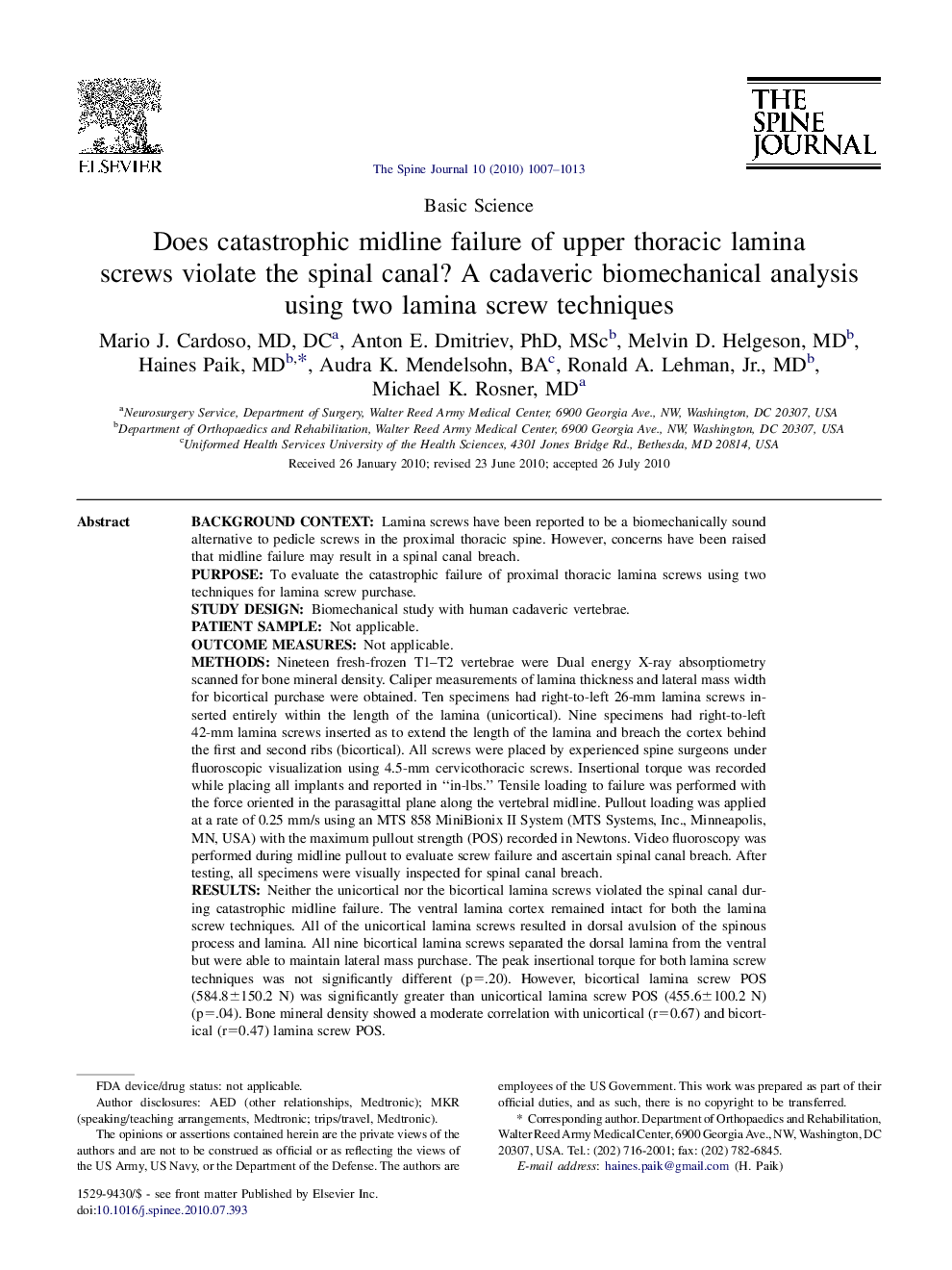| Article ID | Journal | Published Year | Pages | File Type |
|---|---|---|---|---|
| 4099466 | The Spine Journal | 2010 | 7 Pages |
Background contextLamina screws have been reported to be a biomechanically sound alternative to pedicle screws in the proximal thoracic spine. However, concerns have been raised that midline failure may result in a spinal canal breach.PurposeTo evaluate the catastrophic failure of proximal thoracic lamina screws using two techniques for lamina screw purchase.Study designBiomechanical study with human cadaveric vertebrae.Patient sampleNot applicable.Outcome measuresNot applicable.MethodsNineteen fresh-frozen T1–T2 vertebrae were Dual energy X-ray absorptiometry scanned for bone mineral density. Caliper measurements of lamina thickness and lateral mass width for bicortical purchase were obtained. Ten specimens had right-to-left 26-mm lamina screws inserted entirely within the length of the lamina (unicortical). Nine specimens had right-to-left 42-mm lamina screws inserted as to extend the length of the lamina and breach the cortex behind the first and second ribs (bicortical). All screws were placed by experienced spine surgeons under fluoroscopic visualization using 4.5-mm cervicothoracic screws. Insertional torque was recorded while placing all implants and reported in “in-lbs.” Tensile loading to failure was performed with the force oriented in the parasagittal plane along the vertebral midline. Pullout loading was applied at a rate of 0.25 mm/s using an MTS 858 MiniBionix II System (MTS Systems, Inc., Minneapolis, MN, USA) with the maximum pullout strength (POS) recorded in Newtons. Video fluoroscopy was performed during midline pullout to evaluate screw failure and ascertain spinal canal breach. After testing, all specimens were visually inspected for spinal canal breach.ResultsNeither the unicortical nor the bicortical lamina screws violated the spinal canal during catastrophic midline failure. The ventral lamina cortex remained intact for both the lamina screw techniques. All of the unicortical lamina screws resulted in dorsal avulsion of the spinous process and lamina. All nine bicortical lamina screws separated the dorsal lamina from the ventral but were able to maintain lateral mass purchase. The peak insertional torque for both lamina screw techniques was not significantly different (p=.20). However, bicortical lamina screw POS (584.8±150.2 N) was significantly greater than unicortical lamina screw POS (455.6±100.2 N) (p=.04). Bone mineral density showed a moderate correlation with unicortical (r=0.67) and bicortical (r=0.47) lamina screw POS.ConclusionOur results suggest that catastrophic midline failure of lamina screws does not violate the spinal canal. Of the two techniques tested, bicortical lamina screws have a biomechanical advantage. Lamina screws present a viable option for instrumenting the proximal thoracic spine.
